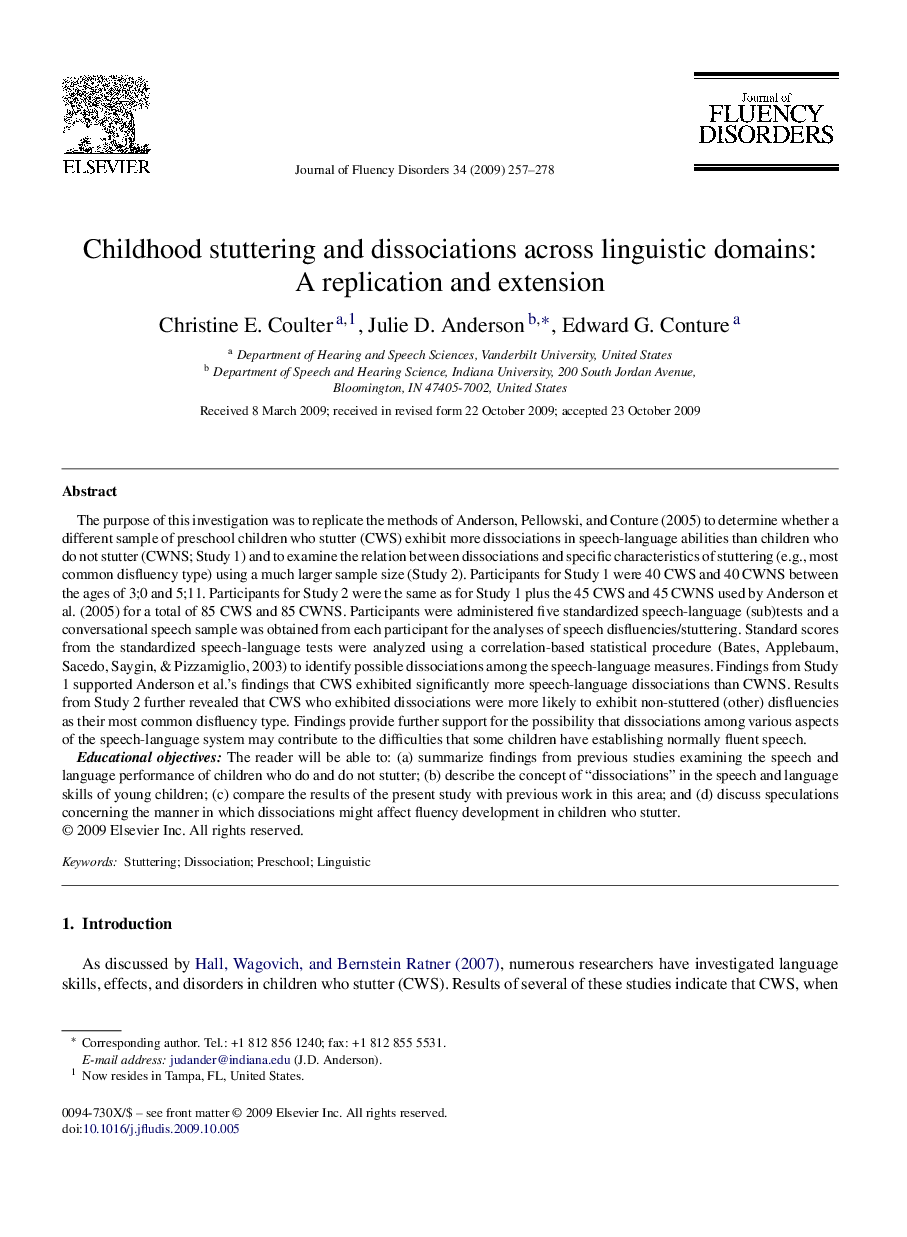| Article ID | Journal | Published Year | Pages | File Type |
|---|---|---|---|---|
| 911480 | Journal of Fluency Disorders | 2009 | 22 Pages |
The purpose of this investigation was to replicate the methods of Anderson, Pellowski, and Conture (2005) to determine whether a different sample of preschool children who stutter (CWS) exhibit more dissociations in speech-language abilities than children who do not stutter (CWNS; Study 1) and to examine the relation between dissociations and specific characteristics of stuttering (e.g., most common disfluency type) using a much larger sample size (Study 2). Participants for Study 1 were 40 CWS and 40 CWNS between the ages of 3;0 and 5;11. Participants for Study 2 were the same as for Study 1 plus the 45 CWS and 45 CWNS used by Anderson et al. (2005) for a total of 85 CWS and 85 CWNS. Participants were administered five standardized speech-language (sub)tests and a conversational speech sample was obtained from each participant for the analyses of speech disfluencies/stuttering. Standard scores from the standardized speech-language tests were analyzed using a correlation-based statistical procedure (Bates, Applebaum, Sacedo, Saygin, & Pizzamiglio, 2003) to identify possible dissociations among the speech-language measures. Findings from Study 1 supported Anderson et al.’s findings that CWS exhibited significantly more speech-language dissociations than CWNS. Results from Study 2 further revealed that CWS who exhibited dissociations were more likely to exhibit non-stuttered (other) disfluencies as their most common disfluency type. Findings provide further support for the possibility that dissociations among various aspects of the speech-language system may contribute to the difficulties that some children have establishing normally fluent speech.Educational objectives: The reader will be able to: (a) summarize findings from previous studies examining the speech and language performance of children who do and do not stutter; (b) describe the concept of “dissociations” in the speech and language skills of young children; (c) compare the results of the present study with previous work in this area; and (d) discuss speculations concerning the manner in which dissociations might affect fluency development in children who stutter.
